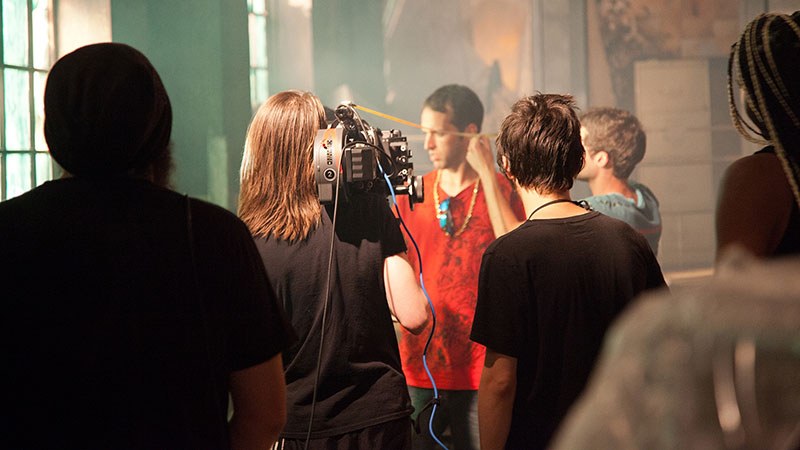Full Sail
The Digital Revolution Has Been Televised: Stephen Beres
Hall of Fame inductee Stephen Beres helped HBO embrace the future through digital filmmaking. Now, he’s helping the network find new ways to tell stories through technology.
Throughout his career, 2004 Film graduate Stephen Beres has been on the forefront of huge technological advances in filmmaking.
One of his first jobs was with Apple, teaching key clients (think superstar editors) how to use Final Cut Pro. In his current role as Vice President of Media Technology and Production Operations for HBO West Coast, he spearheaded the network’s shift away from shooting costly film to shooting digitally. He’s worked on many of your favorite shows, including Westworld, Sesame Street, Girls, The Newsroom, and Game of Thrones, the latter of which was one of the first shows to shoot with the ARRI Alexa when it was still just a prototype. In just a few weeks, he’ll be inducted into Full Sail’s Eighth Annual Hall of Fame.
“I’m a hands-on kind of person,” says Stephen. “I love film, but what I really love is the act of making things.”
Before the term “maker” was associated with a movement, Stephen was a theater kid who enjoyed building sets and tinkering with equipment. He describes stagecraft as “Navy SEAL training for the world of production,” because of how thoroughly it helped hone his ability to problem solve on the fly. When it came time to choose a university, he wanted a school that prioritized craft over theory. That search led him to enroll in Full Sail’s Film degree program.
After graduation, Stephen moved to L.A. where he landed a gig working on a low-budget horror film. This was in 2004, at the beginning of the indie filmmaking boom that arrived on the heels of digital technology made cheaper and more widely available to anyone with a couple of free weekends and a script. Suddenly, there was no shortage of directors seeking cheap post-production services.
Stephen got to talking with a few friends on set. If it was possible to shoot a movie using off-the-shelf equipment, why couldn’t they do the same thing with post-production?
“A big post house was going to charge these filmmakers way too much money, and they didn’t have the resources or the skills to finish something on their own,” he says.
A half-dozen Macintoshes later, Stephen and his friends opened Plaster City, a boutique post-production house specializing in digital media and catering to the independent crowd. Over the next six years, Plaster City built a steady roster of clients, eventually picking up higher profile work as digital photography became more prevalent. One of those clients was HBO.
“This show came along that was going to shoot in Northern Ireland, but it was basically impossible to shoot film in that location. Budgetarily, logistically, it would have been impossible,” he says.
That show was Game of Thrones. The network was at a crossroads. On one hand, they were committed to moving forward with the project. On the other, they were committed to maintaining the look and feel of their brand. Based on his work at Plaster City, they decided to bring Stephen in to pioneer the network’s shift to digital.
“Over the course of six years, we transitioned from 97 percent film to 97 percent digital. What makes an HBO show — good storytelling, fresh voices — has stayed the same. But we managed to modernize our process through technology. Now, we try to help guide our shows through what can sometimes be a treacherous path,” says Stephen.
He means this literally. In 2013, he worked with RED on the Epic RED Dragon, a 6K camera featuring a carbon fiber body that’s light enough to be hoisted by a drone. The first two RED Dragons were used in production on Game of Thrones, enabling the team to get shots that would have otherwise been impossible due to safety risks the rocky Icelandic terrain posed to the crew.
For a guy who grew up as a self-described gear head, getting to work with the best equipment on the planet is an actual dream come true. But Stephen also understands the importance of story first, especially in a world where rapidly advancing technology goes hand-in-hand with plummeting costs. These days, everyone has the ability to make great-looking content, which makes substance all the more crucial.
“How a show speaks to the audience as a visual or as an auditory experience is largely to do with the work that we do,” he says. “In that way, yes, we have to be very creative. But we can’t make decisions just for technology’s sake. Are we making a decision to pursue a particular type of distribution? Or do we go with 4K because it chases some technology down the road? Does that impact our viewers in a way that’s meaningful? Sometimes it doesn’t. We have to be really careful that we’re not getting so enamored with the gear that we take our eyes off what makes people invest in our content so deeply on a personal level.”
Whether you’re ready to apply or just want to learn more about Full Sail University, our Admissions Representatives are here to help. Call us or request more information.

